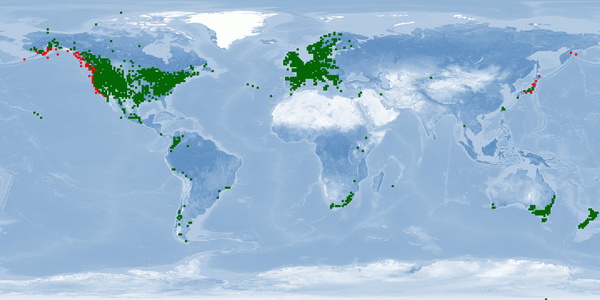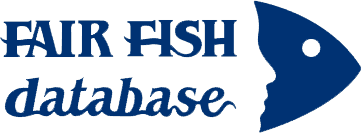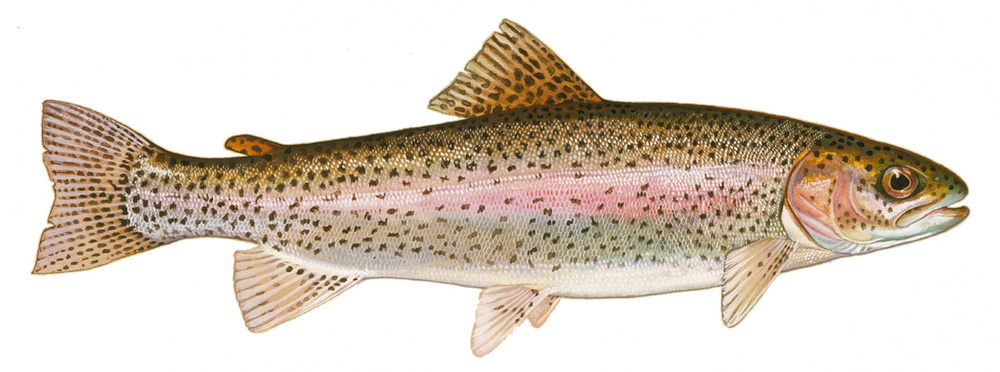

Farming remarks
Oncorhynchus mykiss is one of the dominant salmonids farmed in Europe and North America, second only to Salmo salar. In addition, it is one of the most widely studied model fish species in the wild and in captivity. Yet, the living conditions and the husbandry systems that maximise the welfare of this species are still to be defined, developed, and improved. This lack is quite incomprehensible, given the background and the availability of research performed on this species. The low FishEthoScore is mainly due to the need of space and substrate and to high levels of aggression, stress, and high deformations under farming conditions. Grow-out typically takes place in ponds or raceways, sometimes also in cages. There are two strains in O. mykiss: the anadromous one, also called Steelhead trout, and the potamodromous Rainbow trout. Aquaculture populations probably combine genes of both strains. In anadromous FISHES, throughout the life history, morphology, behaviour, and environmental requirements change. Husbandry systems and practices need to take such differences into account in order to achieve and maintain high welfare. The development of new rearing strategies to optimise the husbandry practices as well as handling with special care would be a step forward to solve some specific welfare concerns. Finally, providing feed which contains a lower amount of fish components from wild catch has proven feasible for this species in lab studies, so a protocol for application in farming conditions has to be developed.
Note: The name of the age classes differ in the two strains: LARVAE in Rainbow trout are called ALEVINS in Steelhead trout, JUVENILES in Rainbow trout are called PARR and SMOLTS in Steelhead trout, SPAWNERS in Rainbow trout are called GRILSE and KELTS in Steelhead trout. For consistency with other profiles, we will apply the usual age class structure of eggs, LARVAE, FRY, JUVENILES, ADULTS, SPAWNERS and make sure to signal the respective age class for Steelhead trout in the entries.
For details see: WelfareCheck | farmFor recommendations see: Advice | farm
















